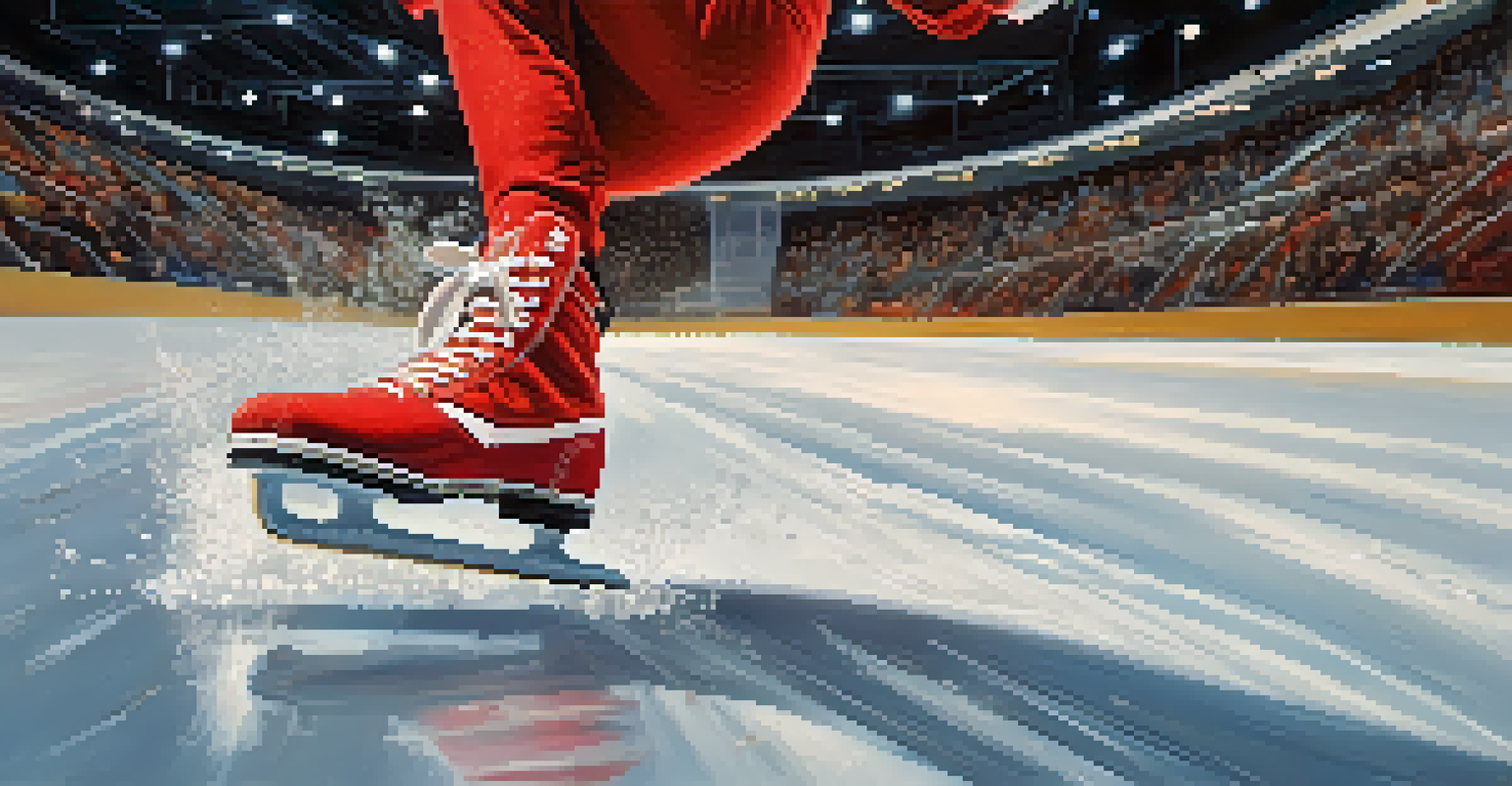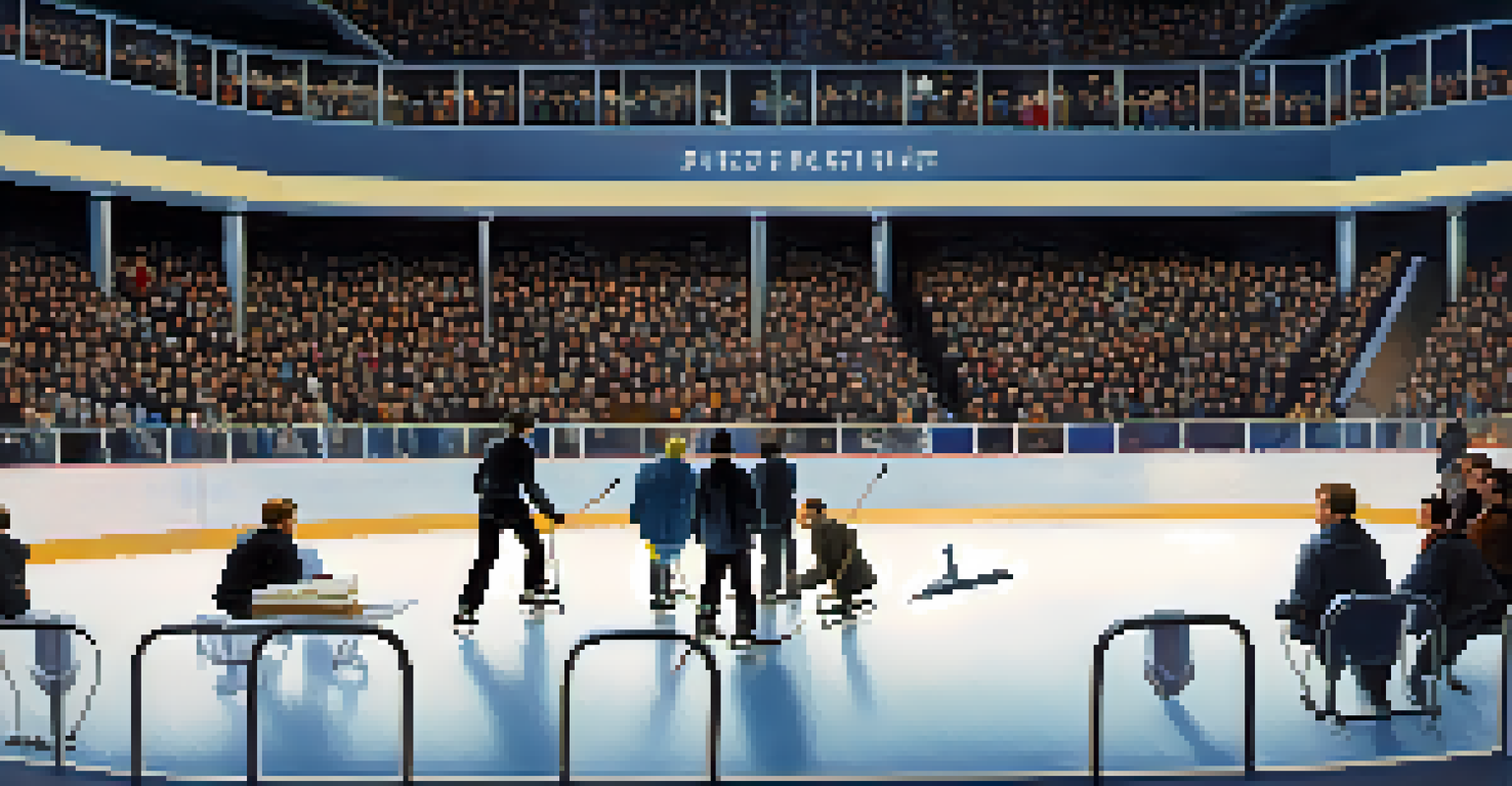Understanding Ice Skating Judging: Scoring and Criteria

The Basics of Ice Skating Judging
Ice skating judging may seem intimidating at first, but it's really about assessing performance based on specific criteria. Judges evaluate skaters on various technical and artistic aspects, ensuring a fair competition. Understanding the basics can help both skaters and fans appreciate the nuances of the sport.
Skating is a dance, and the ice is our stage.
Each judge observes the skater's execution, artistry, and overall impression. They take notes throughout the performance, focusing on elements like jumps, spins, and footwork. This process might seem subjective, but it’s backed by established guidelines that maintain consistency across competitions.
In ice skating, every move counts, and grasping the fundamentals gives insight into what judges look for. Whether you're a skater aiming for improvement or a fan wanting to understand the sport better, knowing the basics sets a solid foundation for deeper exploration.
Understanding the Scoring System
The scoring system in ice skating comprises two main components: the Technical Score (TS) and the Program Component Score (PCS). The TS is based on the execution of technical elements, while the PCS evaluates the artistic performance. Together, these scores create a comprehensive view of a skater's performance.

Judges assign a base value to each technical element, such as jumps and spins, which can be adjusted based on execution quality. For example, a perfectly executed jump might receive a higher score than one that is slightly under-rotated. This detailed scoring breakdown ensures that every aspect of the performance is accounted for.
Judging Basics: Performance Criteria
Ice skating judging evaluates skaters based on technical execution and artistic expression, ensuring a fair competition.
By understanding this scoring system, skaters can identify areas for improvement and strategize their routines. Fans also gain a deeper appreciation for the complexity of judging, as it's not just about who lands the most jumps, but how well those moves are executed.
Technical Elements: What Judges Look For
Technical elements are the heart of any ice skating routine, and judges pay close attention to their execution. This includes jumps, spins, lifts, and footwork sequences. Each element has specific criteria that determine its success, such as height, distance, and form.
The only way to prove that you can do something is to do it.
For instance, when judging jumps, judges look for proper takeoff and landing techniques, as well as the overall flow of the movement. Spins are evaluated based on speed, centeredness, and positions. These technical aspects create a framework within which skaters can showcase their skills.
Understanding what judges focus on helps skaters hone their routines to maximize their scores. By fine-tuning technical elements, they can elevate their performances and increase their chances of standing out in a competitive field.
Artistic Impression: Enhancing Performance Scores
Artistic impression is where a skater's personality shines through, and it's a crucial part of the judging process. This criterion encompasses choreography, expression, and the overall presentation of the performance. Judges assess how well a skater conveys emotion and connects with the audience.
Choreography plays a significant role in artistic impression, as it must complement the music and enhance the overall narrative of the routine. A skater who can move seamlessly with their chosen piece will likely score higher in this area. Judges also take note of how effectively a skater uses the entire ice surface.
Understanding Scoring Systems
The scoring system combines Technical Score and Program Component Score, highlighting both skill execution and artistic presentation.
By focusing on artistic elements, skaters can differentiate themselves from their competitors. It's not just about technical skill; the ability to tell a story and engage the audience is equally important in achieving high scores.
The Role of Judges in Ice Skating Competitions
Judges play a vital role in ice skating competitions, serving as the gatekeepers of scoring fairness. Each judge brings their expertise and perspective to the table, contributing to a holistic view of the performance. Their decisions can significantly impact a skater's career trajectory.
To ensure impartiality, judges often come from diverse backgrounds within the sport, including former skaters and coaches. They undergo rigorous training to stay updated on judging criteria and scoring systems. This commitment to continuous learning helps maintain the integrity of the sport.
By understanding the judges' roles, skaters and fans can appreciate the complexities involved in scoring. Recognizing that judges are working hard to provide fair evaluations adds an extra layer of respect for their contributions to the sport.
Common Judging Mistakes and Misconceptions
Despite the structured nature of ice skating judging, misconceptions often arise about how scores are determined. One common myth is that judges favor certain skaters based on nationality or past performances. In reality, judges are trained to evaluate performances objectively, focusing on technical and artistic merit.
Another misconception is that all judges score identically. In fact, variations in scores can occur due to personal interpretations of the performance. It's essential to remember that judging is a subjective process, and differing opinions can lead to diverse scoring outcomes.
Technology Enhances Judging Accuracy
Advancements in technology, such as video replay and performance analysis software, improve the accuracy and transparency of ice skating judging.
Addressing these misconceptions can foster a better understanding of the judging process. By recognizing the complexities involved, skaters and fans can appreciate the sport even more, celebrating both the artistry and the rigorous evaluation that underpins it.
The Impact of Technology on Judging
Technology has made significant strides in the world of ice skating judging, enhancing accuracy and transparency. For instance, video replay systems allow judges to review performances in detail, ensuring that every element is accurately assessed. This technology has revolutionized how scores are determined.
Advanced software also helps in analyzing skater performances by providing data on speed, trajectory, and execution. This information not only aids judges but also serves as valuable feedback for skaters looking to refine their routines. The integration of technology thus benefits both parties involved.

As technology continues to evolve, it will undoubtedly shape the future of ice skating judging. Embracing these advancements can lead to a more precise and fair evaluation process, ultimately enhancing the sport as a whole.
Final Thoughts on Ice Skating Judging
Understanding ice skating judging is essential for anyone involved in the sport, whether as a skater, coach, or fan. Grasping the intricacies of scoring and criteria can deepen appreciation for the performances and the hard work that goes into them. It's a blend of art and science that captivates audiences worldwide.
As skaters continue to push boundaries in both technical and artistic realms, judges must adapt and evolve alongside them. This dynamic relationship between skaters and judges fosters a culture of growth, where performances can continuously improve and inspire.
In the end, ice skating judging is not just about scores; it's about celebrating the artistry and athleticism of the skaters. By understanding the judging process, we can all become more informed spectators, cheering on our favorites with a newfound appreciation for the sport.